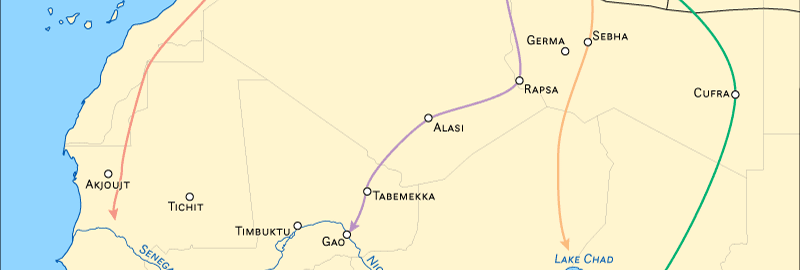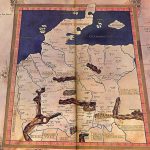The map showing the greatest territorial extent of the Roman Empire is well known, as is the history of the Roman legion in China. But how far south did the Romans travel on their African expeditions?
It turns out that the Romans made significant discoveries in the depths of Africa, and not only in Egypt under their control, and the Roman influence extended even further, as can be inferred from Roman coins and ceramics found in Zanzibar or in the Congo.
Between the first and fourth years of our era, there were several Roman expeditions in the West African region. According to Jonathan Roth, the main motivation for organizing these expeditions was to find sources of gold and organize transport to provinces located on the north coast of Africa. According to Pliny, the first organized expedition was commanded by Cornelius Balbus, who in 19 BCE probably reached the Niger River near Timbuktu. His claims have been backed up today by Roman artefacts discovered in the vicinity of Mali. Another expedition in the area was led by Consul Suetonius Paulinus, the first Roman commander to lead an army through the Atlas Mountains. His legionaries probably reached the Senegal River, as evidenced by Roman objects found until today in Mauritania.
In the central Sahara desert, two expeditions to Lake Chad were undertaken, according to Claudius Ptolemy, then known as Lake Hippopotamus. They were commanded by Septimius Flaccus and Julius Maternus. The first took place in CE 50 as retaliation against the Nomads attacking Leptis Magna, and three months later it reached a land called Agisimba in the Lake Chad area. The second one took place 40 years later and was a purely commercial expedition. After 4 months of travel, Julius Maternus arrived in the same area from where he was able to bring back a two-horned rhino, which was then featured in Colosseum.
Some historians argue that the Romans may have reached the equatorial regions. According to Pliny, in CE 70, Valerius Festus, the legate of the Legion of III Augustus, led another expedition to the area of the Niger River. Different interpretations indicate the possibility of some legionaries travelling beyond the Timbuktu area, up to the mouth of the Niger in today’s Nigeria. On the other hand, some historians say that Festus never left the area of modern southern Libya.
Another expedition that deserves a separate paragraph, though also debated by many historians, is the expedition commissioned by Nero in the 60-61. Its purpose was to explore the sources of the Nile, perhaps, as Pliny believed, in order to obtain information useful in assessing the possibility of the conquest of Ethiopia (as all areas south of Egypt were called then) by Rome. Seneca the Younger wrote that the expedition reached Meroë and then the Sudd Swamp in what is now South Sudan, where it ran into serious problems with further exploration. There are theses that a group of legionaries reached the Murchison Falls in northern Uganda.
In addition to land expeditions, the Romans also organized many sea expeditions along the African coast, but such an extensive topic deserves a separate article.







